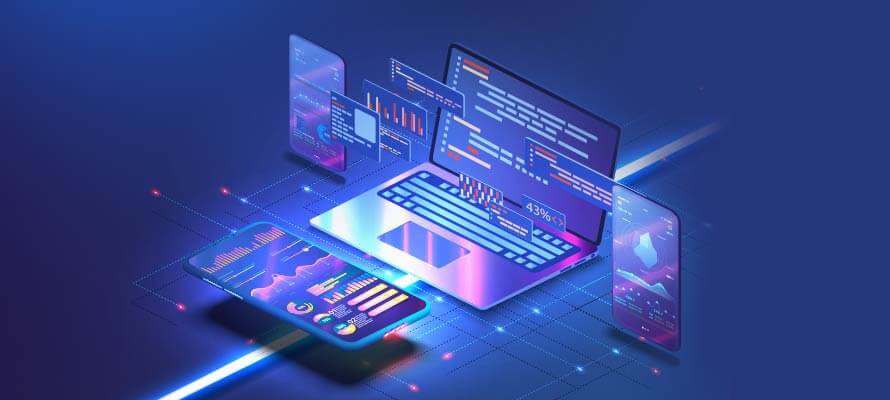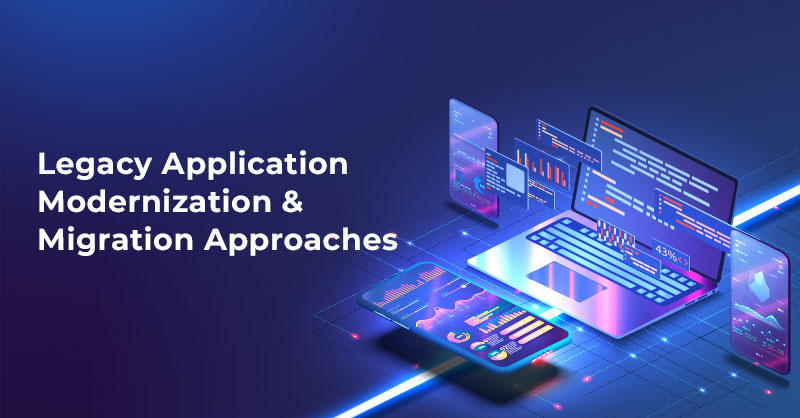Legacy Application Modernization and Migration Approaches

Written by Vijaya Lakshmie
Mainframes Practice Head
September 26, 2022
Get The Most Value from your Legacy Technology
Legacy app modernization is the practice of rearchitecting, rebuilding, or replacing current legacy applications that have turned out to be outdated to the point that they no more operate effectively and fail to satisfy business goals. Many organizations are on their way to digital transformation, and legacy application modernization continues to be a roadblock. Up to three-quarters of legacy system modernization projects fail to be completed without clarity or a rushed discovery phase. Learn how you can make your legacy app modernization initiative a success.
Digital transformation may have become a buzzword in the past few years. But that should not outdo the importance of transforming existing products and processes to allure and retain customers, drive business growth, and remain competitive.
What is a Legacy System?
A legacy system is any older software, technology, or method/language that an organization relies on. While a legacy application may continue to be used and may be integral to the organization, this application comes with a whole host of challenges as a result of the technology, architecture, or functionality that impede the business (value, agility, fit) or IT (cost, complexity or risk).
On a granular legal, applications become legacy systems when they start to introduce these common challenges:
- Difficult to maintain or update, increasing IT costs in both time and staff
- Code bloat or hacked integrations can lead to performance issues, instability, or bottlenecks in scaling.
- Code bloat in monolithic apps or undocumented code elements makes it difficult for new IT staff.
- Third-party elements of the application may no longer be supported
- The application may not interact with newer systems
- The system is no longer agile to emerging customer needs
- Potential security or compliance risks
Though planned obsolescence is a term that applies to product life cycles, the rapid pace of technology change, market dynamics, and organizational change inevitably lead to legacy systems.
Why Migration?
Your green screen may be missing out on almost 40 years of UI/UX technology improvements, partly because it is required to run on a mechanism developed in the 1970s (nowadays, there may even be 5250 emulators available). So no matter how efficient your business applications are, they might be regarded as a “legacy” by today’s standards if they still use a green screen. For example, older IBM i green screens can’t handle the complex images, audio, and video that a web browser offers (or terminals).
For both business and consumer IBM i applications, a graphical user interface is the most common user experience.
The widespread use of mobile devices with touch screens and the internet drives this experience. Unfortunately, green screens cannot display data like graphs and visuals that provide clarity from both the visual element and the numbers behind the graphics.
- Legacy green screen application has the following drawbacks
- Lack of Automation, DevOps
- Inadequate Code Analysis
- Mainframe Resources Scarcity
- Huge MIPS cost
- Maintenance difficulties /Undocumented Interfaces
With today’s emerging technologies and tools, we have the benefit of availing the best of legacy and latest technologies to modernize applications.
What are the Benefits of Modernization?
We currently live in a digital world where legacy green screens are replaced with modern graphical user interfaces that are not only demanded by businesses but also the standard as a result of UI/UX technology improvements. Now, businesses are looking for solutions that can rapidly and efficiently transfer their current RPG applications from just the 5250 to web and mobile devices. A few advantages of moving to a modern IBM i application’s graphical user interface are:
- Maximize the benefits of the IBM i platform for the 21st-century workforce.
- IBM i applications that are simple to use and learn may increase the productivity and efficiency of end users.
- IBM i green screen modernization reduces the perception of outdated applications.
- Maintain the advantages of your own-brand products in the marketplace.
- Boost application adoption to cut down application costs and training time.
The following approaches may fit well for Mainframe applications
Rehosting / Re-platforming
- Only COBOL, DB2, JCL, and CICS can be rehosted in the cloud
- Can’t handle IMS DB, DC, REXX, PL1, etc.
- Infrastructure costs will go down, and the application will stay as is
- Low-risk / low cost
- SME involvement will be required
Rewriting
- Automated Code Conversion
- Speed to Market
- Low Risk
- Re-architecture and Code Cleanup Performed with Java /.NET
- SME knowledge Not Required
- Infrastructure costs will go down
- Extracting Business Rules and Developing from Scratch
Takes time to Document Requirement from Source Code
SME Involvement Required to Finalize Requirements
New Architecture can be Designed from Scratch
Easy to Include New Requirements from Business
For all Legacy Modernization/Migration projects, agile suits well for the following reasons:
- Collaboration & Transparency
- Stakeholder Engagement
- Early and Predictable Delivery
- Predictable Costs & Schedule
- Allows for Change
Summary
Legacy application modernization includes leveraging your current skills and resources to meet digital transformation initiatives and keep up with shifting market conditions and customer expectations. Legacy applications obstruct business growth in many ways, and these techniques represent the theory and method of modernizing these applications. Royal Cyber provides modernization solutions for many possible techniques. For more information, you can email us at [email protected] or www.royalcyber.com.
Recent Posts
- An Insight into ServiceNow Hardware Asset Management (HAM) Ramya Priya Balasubramanian Practice Head Service Now …Read More »
- Learn to write effective test cases. Master best practices, templates, and tips to enhance software …Read More »
- In today’s fast-paced digital landscape, seamless data integration is crucial for businessRead More »




